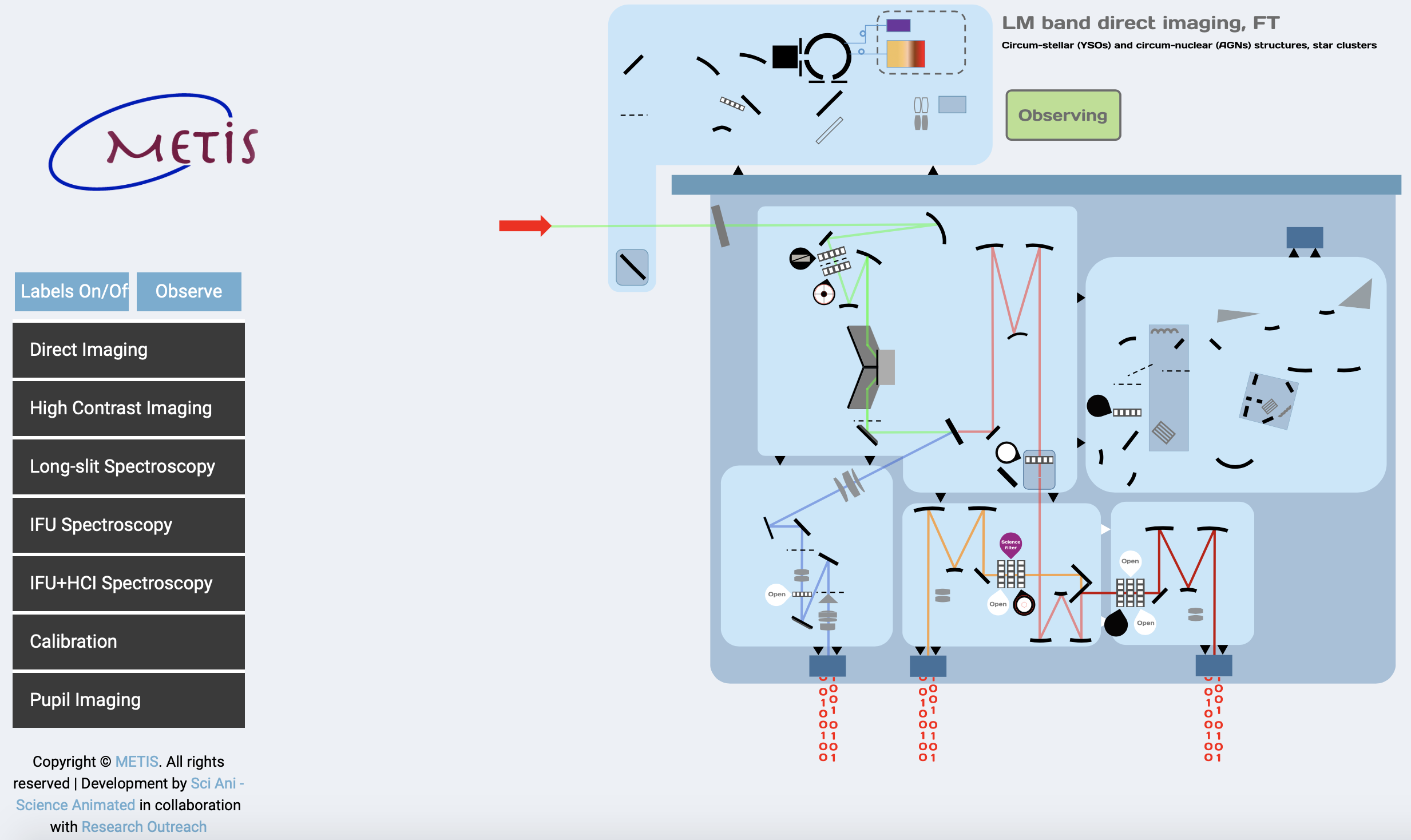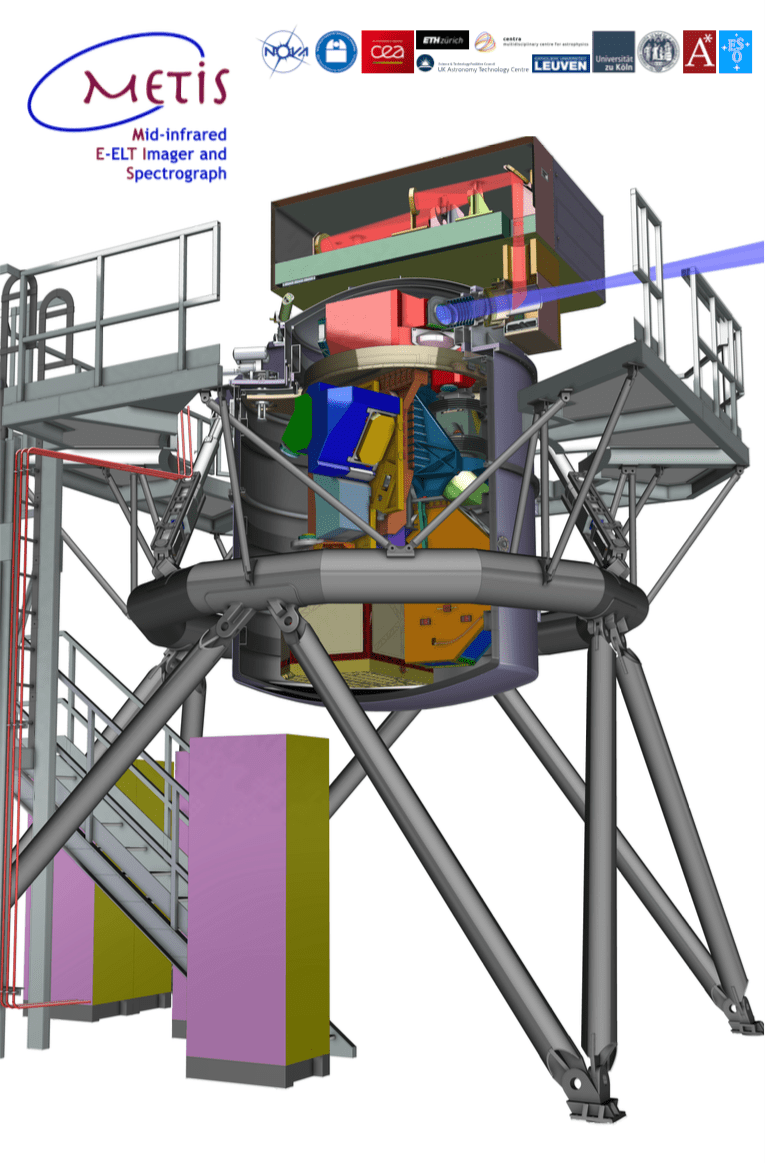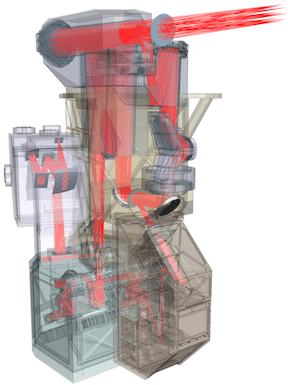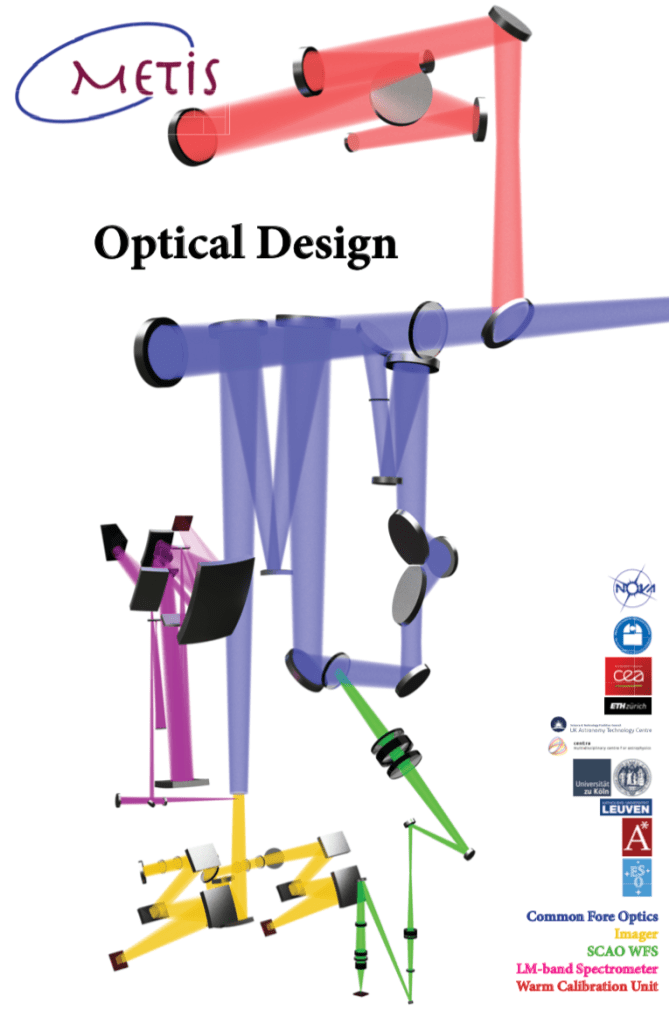- Diffraction-limited imaging at 3-13 microns with a field of view of approximately 11 x 11″. The imager also includes low/medium resolution slit spectroscopy as well as coronagraphy for high contrast imaging.
- An IFU-fed high-resolution spectrograph in L and M bands with a field of view of 0.5 square arcseconds and spectral resolving power of ~100,000, including a mode with extended instantaneous wavelength coverage and options to combine the IFU with coronagraphy.
The instrument consists of two separate units, one for the imager and another for the spectrograph. It is – together with the AO wavefront sensor and the fore-optics – entirely encased in a cryostat to maintain the stable low temperatures required for good performance at mid-infrared wavelengths. To achieve diffraction limited performance, METIS will use a single conjugate adaptive optics system to compensate for atmospheric turbulence. The wavefront will be measured inside METIS, and this information will be used to control the adaptive mirror M4 of the ELT.




